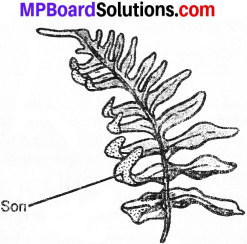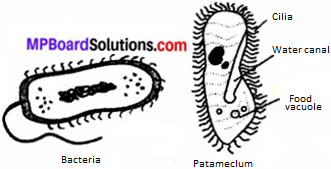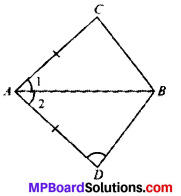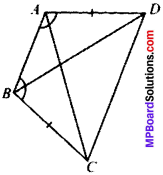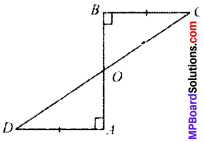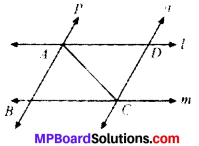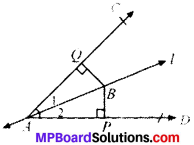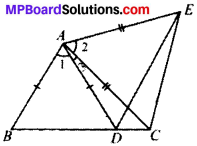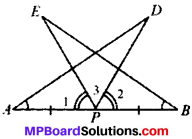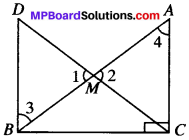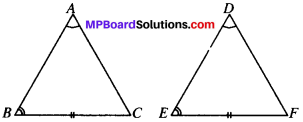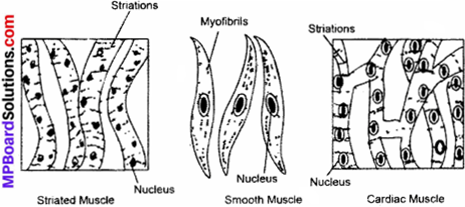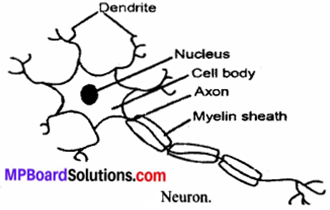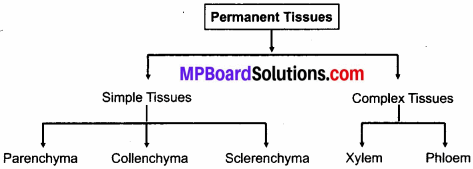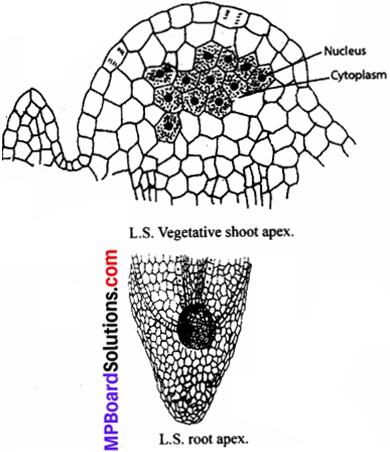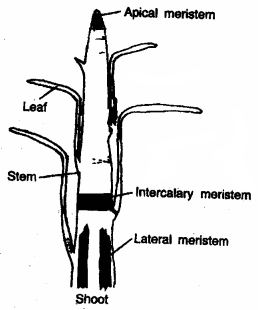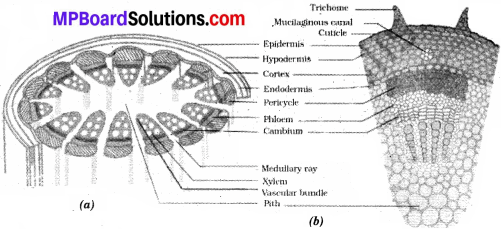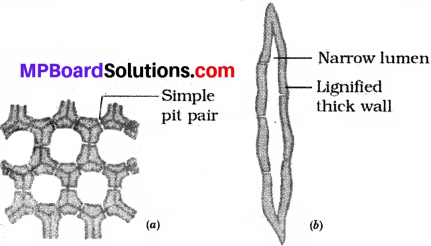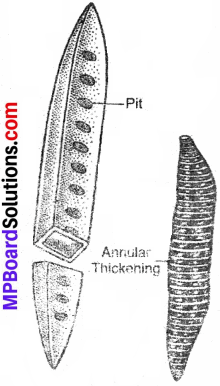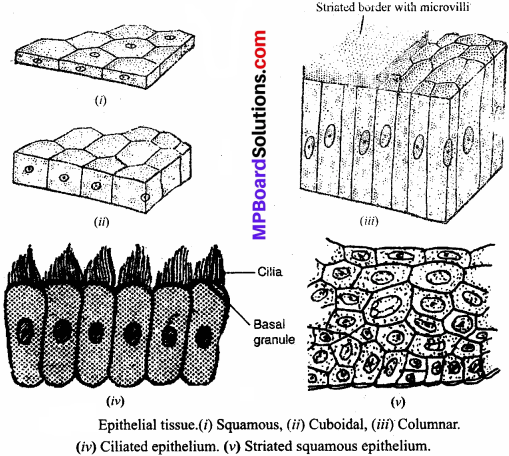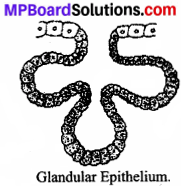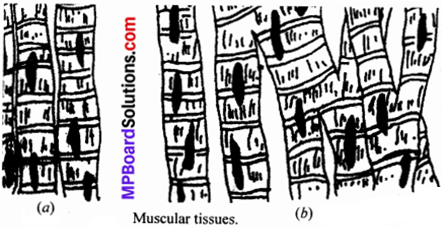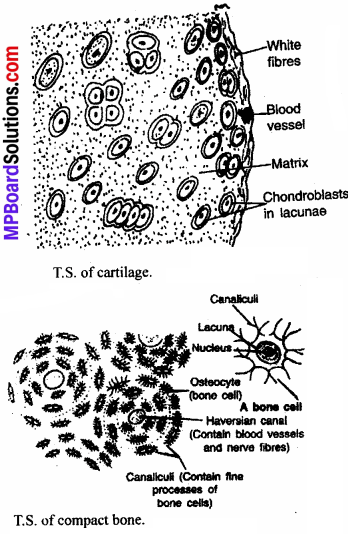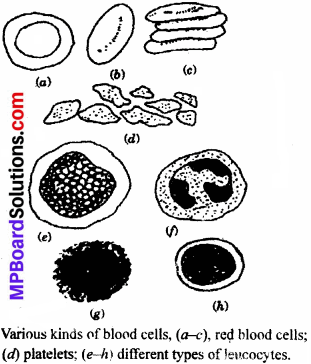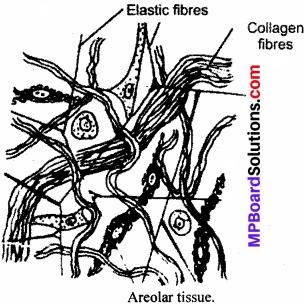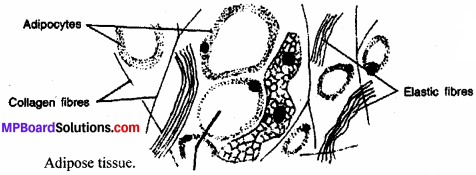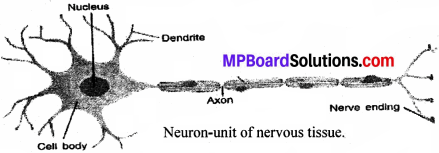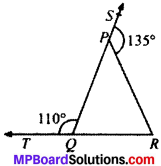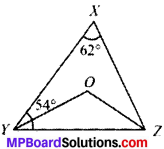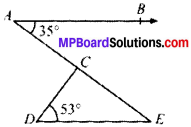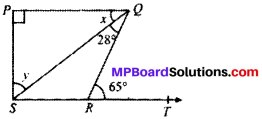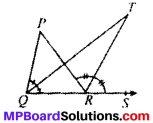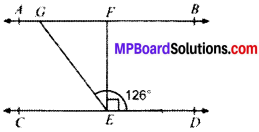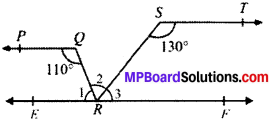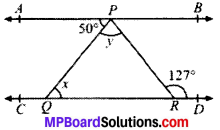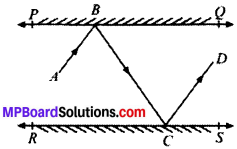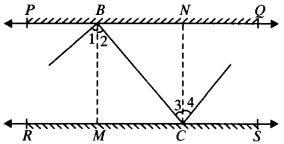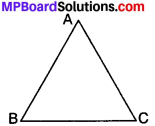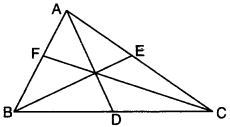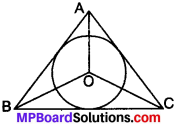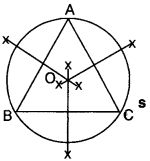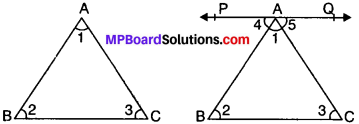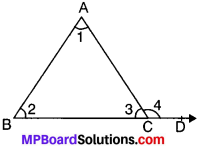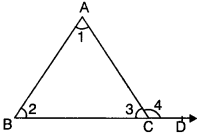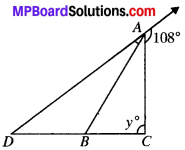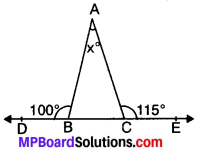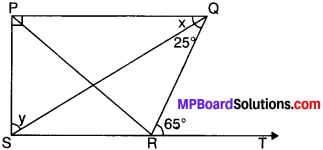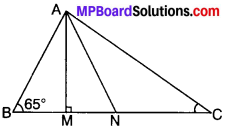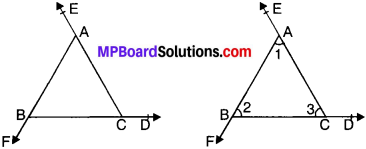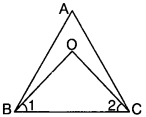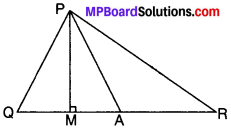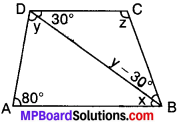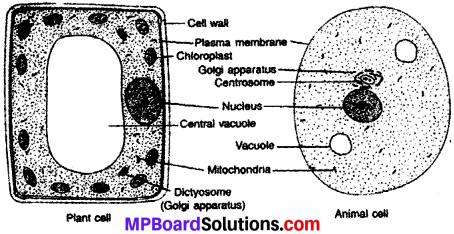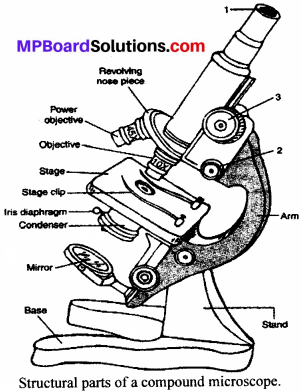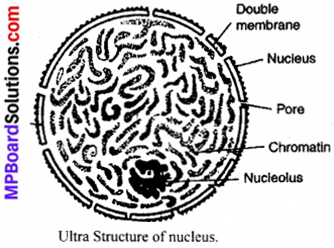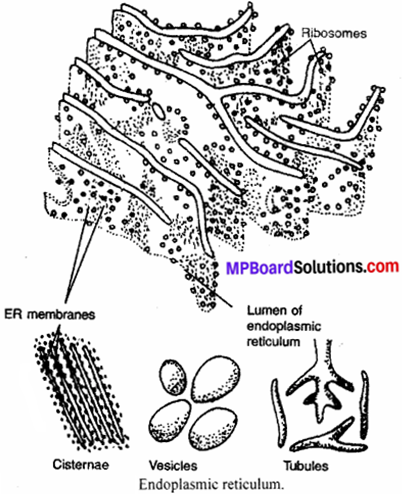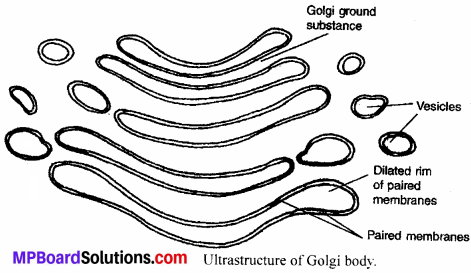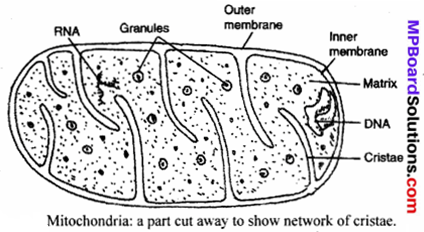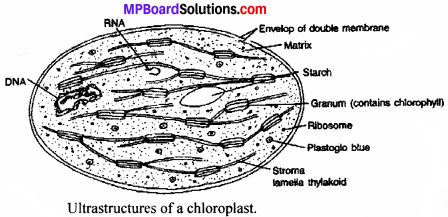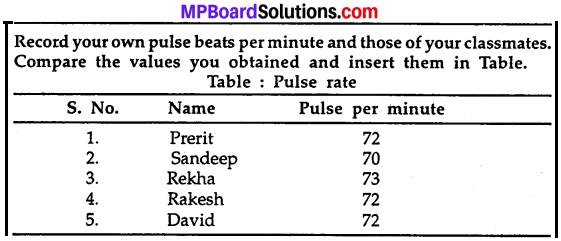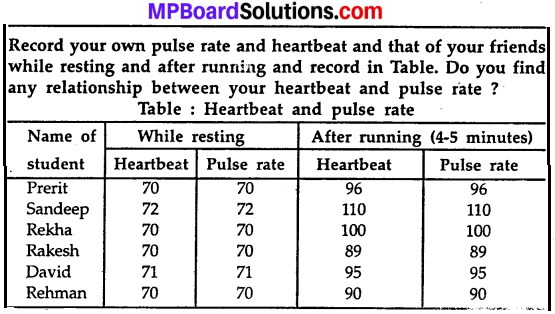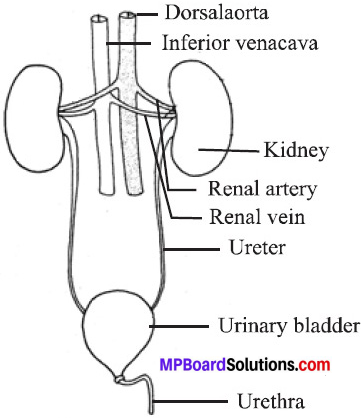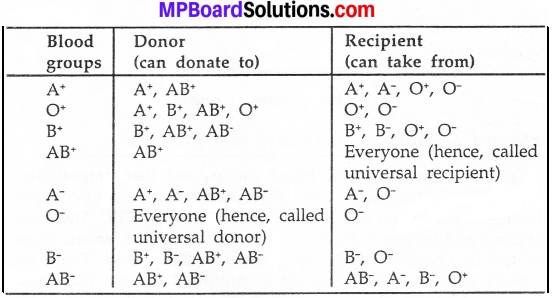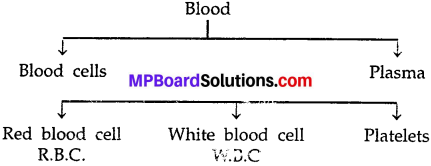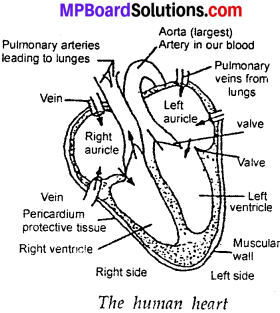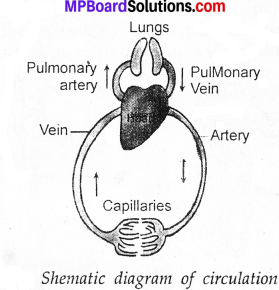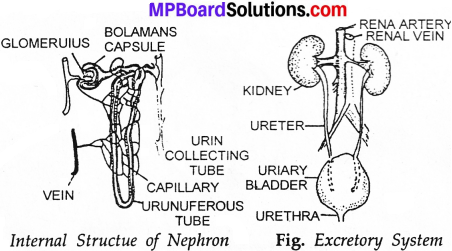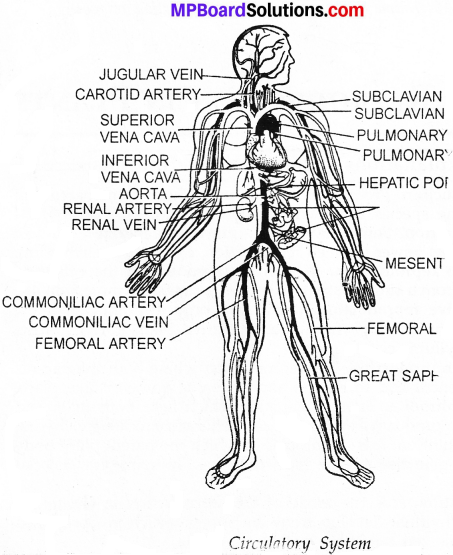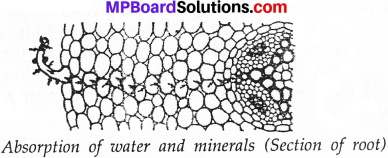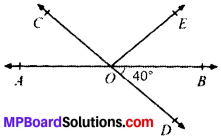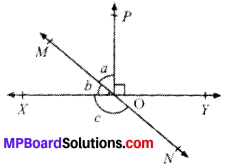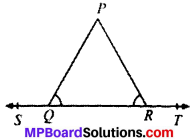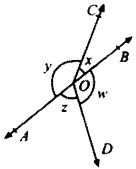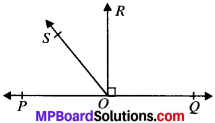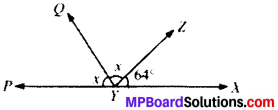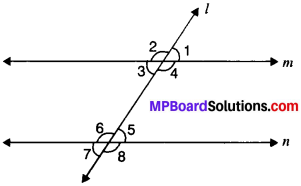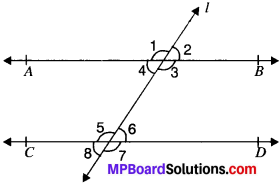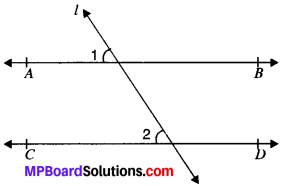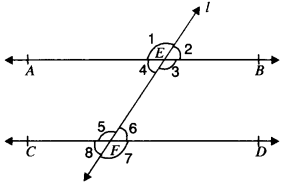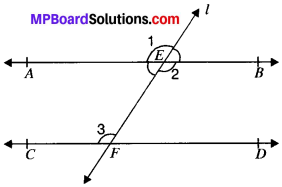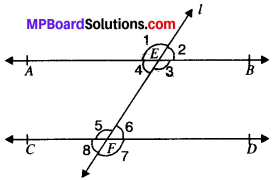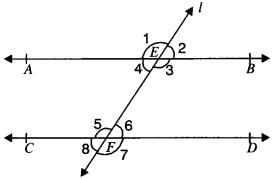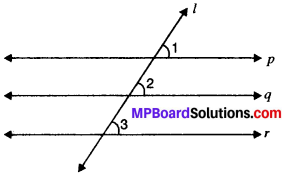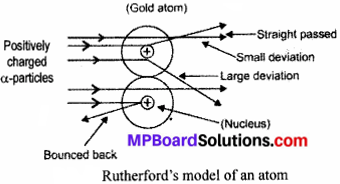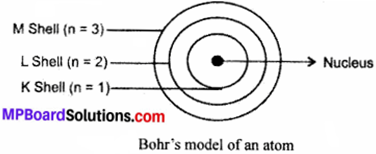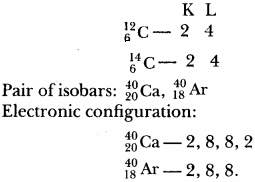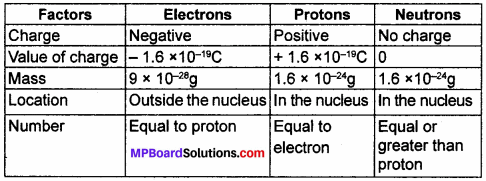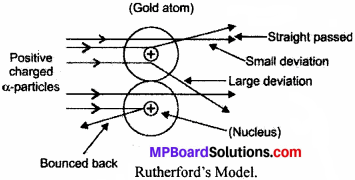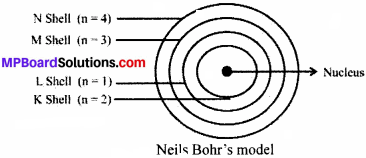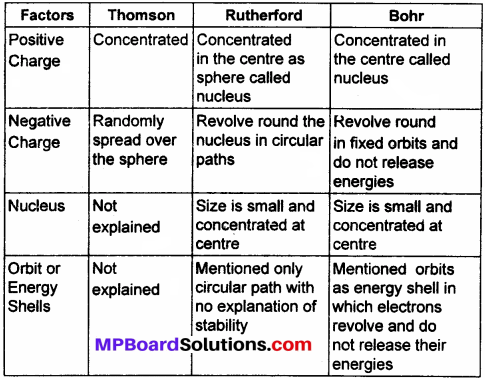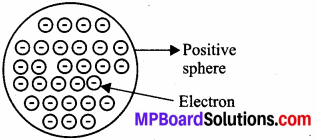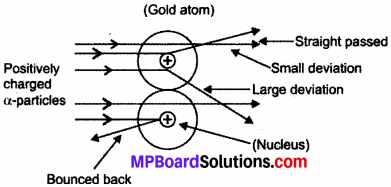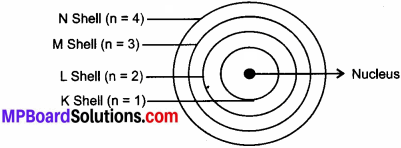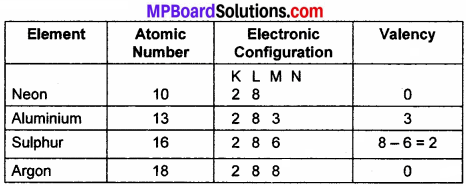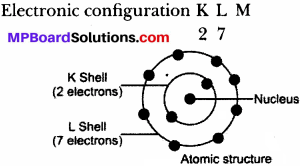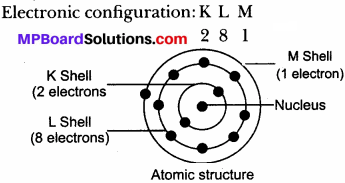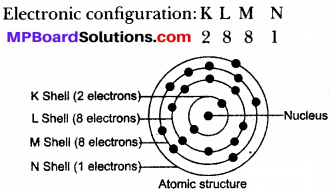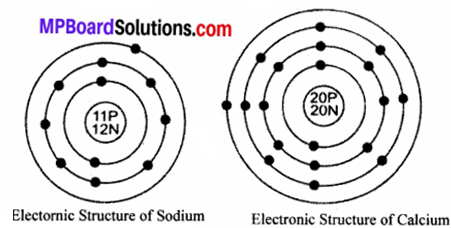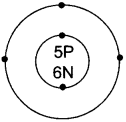MP Board Class 7th Science Solutions Chapter 12 Reproduction in Plants
Reproduction in Plants Intex Questions
Question 1.
Boojho wants to know if there is any advantage of vegetative propagation?
Answer:
Plants produced by vegetative propagation take less time to grow and bear flowers and fruits earlier than those produced from seeds. The new plants are exact copies of the parent plant, as they are produced from a single parent.
Question 2.
Boojho wants to know how the male gamete in the pollen grain reaches the female gamete present in the ovule?
Answer:
The ovary contains one or more ovules.
![]()
Question 3.
Boojho wants to know why flowers are generally so colorful and fragrant. Is it to attract insects?
Answer:
Yes.
Activities
Activity – 1
Take a fresh potato. Observe the scars on it with the help of a magnifying glass. You may find buds in them. These scars are also called “eyes”. Cut a few pieces of a potato, each with an eye and bury them in the soil. Water the pieces regularly for a few days and observe their progress?
Answer:

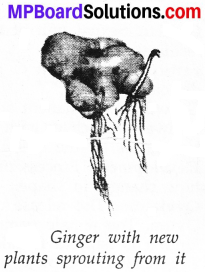
Reproduction in Plants Text Book Exercises
Question 1.
Fill in the blanks:
- Production of new individuals from the vegetative part of parent is called ……………………….
- A flower may have either male or female reproductive parts Such a flower is called …………………….
- The transfer of pollen grains from the another to the stigma of the same or of another flower of the same kind is known as ………………………….
- The fusion of male and female gametes is termed as ………………………
- Seed dispersal takes place by means of …………………………. , ……………………… and …………………………….
Answer:
- Vegetative propagation
- unisexual flowers
- pollination
- fertilisation
- wind, insects, water.
Question 2.
Describe the different methods of asexual reproduction. Give examples?
Answer:
The various methods of asexual reproduction are:
- Vegetative propagation, for example stem cutting of rose or champa.
- Budding, for example reproduction in yeast by budding.
- Fragmentation, for example fragmentation in spirogyra.
- Spore formation, for example reproduction in fern.
![]()
Question 3.
Explain what you understand by sexual reproduction?
Answer:
In this type of reproduction male gamete (sperm) combines tie female gamete (ovum) in animals to form zygote.
Question 4.
State the main difference between asexual and sexual reproduction?
Sexual Reproduction:
- It occurs both in lower and the higher organisms but mostly in higher plants and animals.
- In it, there is fusion of the two (male and female) gametes and for this the sexes are required.
- The new individual formed is identical to the parent.
Asexual Reproduction:
- Usually occurs in lower organisms.
- Only one parent is sufficient in asexual reproduction.
- The new individual formed is similar but not identical to the parents.
Question 5.
Sketch the reproductive parts of a flower?
Answer:
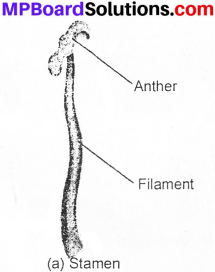
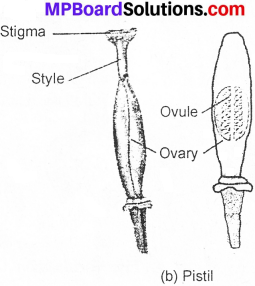
Question 6.
Explain the difference between self – pollination and cross – pollination?
Answer:
self – pollination:
The transfer of pollen from the another to the stigma of a flower is called pollination.
If the pollen lands on the stigma of the same flower it is called self – pollination.
cross – pollination:
When the pollen of a flower lands on the stigma of another flower of the same plant, or that of a different plant of the same kind, it is called cross – pollination.

Question 7.
How does the process of fertilisation take place in flowers?
Answer:
Fertilization is the process in which male and female gametes fuse together. In flowering plants the pollen fuses with ovules present in the overy to form a zygote, which later on develops into seed.
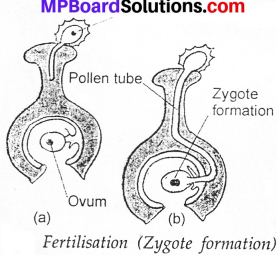
Question 8.
Describe the various ways by which seeds are dispersed?
Answer:
In nature same kind of plants grow at different places. This happens because seeds are dispersed to different places. Sometimes after a walk through a forest or a field or a park, we may have found seeds or fruits sticking to our clothes. Seeds and fruits of plants are carried away by wind, water and animals.
Winged seeds such as those of drumstick and maple [Fig.(a) and (b)], light seeds of grasses or hairy seeds of aak (Madar) and hairy fruit of sunflower [Fig. (a), (b)], get blown off with the wind to far away places. Some seeds are dispersed by water. These fruits or seeds usually develop floating ability in the form of spongy or fibrous outer coat as in coconut. Some seeds are dispersed by animals, especially spiny seeds with hooks which get attached to the bodies of animals and are carried to distant places. Examples are Xanthium and Urena.
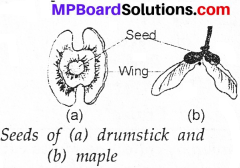
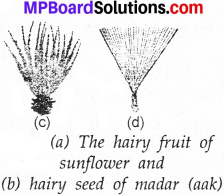
Some seeds are dispersed when the fruits burst with sudden jerks. The seeds are scattered far from the parent plant. This happens in the case of castor and balsam.
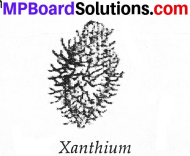
Question 9.
Match items in Column I with those in Column II
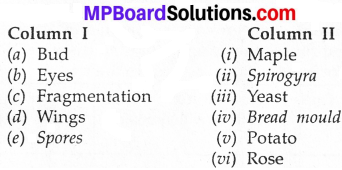
Answer:
(a) – (iii)
(b) – (v)
(c) – (ii)
(d) – (i)
(e) – (iv).
Question 10.
Tick the correct answer:
Question (a)
The reproductive part of a plant is the?
(i) leaf
(ii) stem
(iii) root
(iv) flower.
Answer:
(iii) root
Question (b)
The process of fusion of the male and the female gametes is called?
(i) fertilisation
(ii) pollination
(iii) reproduction
(iv) seed formation.
Answer:
(i) fertilisation
Question (c)
Mature ovary forms the?
(i) seed
(ii) pistil
(iii) stamen
(iv) fruit.
Answer:
(iv) fruit.
![]()
Question (d)
A spore producing plant is?
(i) rose
(ii) bread mould
(iii) potato
(iv) ginger.
Answer:
(iii) potato
Question (e)
Bryophyllum can reproduce by its?
(i) stem
(ii) leaves
(iii) roots
(iv) flower.
Answer:
(ii) leaves
Extended Learning – Activities and Projects
Question 1.
Make your own cactus garden by collecting pieces cut from different kinds of cacti. Grow the variety in one single flat container or in separate pots?
Answer:
Do yourself.
Question 2.
Visit a fruit market and collect as many local fruits as possible. If many fruits are not available, you can collect tomatoes and cucumbers (these are fruits, though we use them as vegetables). Make drawings of the different fruits. Split the fruits and examine the seeds within. Look for any special characteristics in the fruits and their seeds?
Answer:
Do yourself.
Question 3.
Think of ten different fruit – bearing plants. Remember that many vegetables are also fruits of the plants. Discuss with your teacher, parents, farmers, fruit growers and agricultural experts (if available nearby) and find out the manner of their dispersal. Present your data in the form of a table as shown below:

Answer:
Do yourself
Question 4.
Suppose there is one member of a particular kind of organism in a culture dish, which doubles itself in one hour through asexual reproduction. Work out the number of members of that kind of organism which will be present in the culture dish after ten hours. Such a colony of individuals arising from one parent is called a “clone”?
Answer:
Do yourself.
Reproduction in Plants Additional Important Questions
Objective Type Questions
Question 1.
Choose the correct alternative:
Question (a)
………………………… is formed in female reproductive part of plant.
(a) pollen grain
(b) pollination
(c) female gamete
(d) stigma.
Answer:
(d) stigma.
Question (b)
The process of reaching pollen grains to stigma is called as …………………….
(a) pollination
(b) budding
(c) fission
(d) fertilisation.
Answer:
(a) pollination
![]()
Question (c)
In plants, male and female reproductive organs are found in ………………………….
(a) leaves
(b) flowers
(c) roots
(d) stem.
Answer:
(b) flowers
Question (d)
Those living beings who have male and female reproductive organs differently are called ………………………….
(a) asexual
(b) bisexual
(c) unisexual
(d) None of these.
Answer:
(c) unisexual
Question (e)
Zygote is formed:
(a) by fusion of two male gamete
(b) by fusion of two female gametes
(c) by fusion of male and female gametes
(d) by all the above methods.
Answer:
(c) by fusion of male and female gametes
Question (f)
Which one of the following organisms shows budding?
(a) Hydra
(b) Spirogyra
(c) Amoeba
(d) Paramecium.
Answer:
(a) Hydra
Question 2.
Fill in the blanks:
- ……………………. are parts of flower.
- Once the pollen grains reach stigma, they form …………………………..
- ……………………… are formed in pollen grains.
- The long thread like structure of carpel is called as ………………………
- The grain like structure in ovary is called as …………………………
- ………………………….. is formed in ovule.
- Formation of a new plant from the stem of sugarcane is known as ………………………..
- The fusion of sperm and egg is known as ………………………..
- We can count the age of a tree through its ……………………….
- The cells involved in sexual reproduction are called ………………………….
- Fusion of gametes gives rise to a single cells called ……………………….
- The process of fusion of gametes is called ………………………….. in animals and plants.
- Animals having both reproductive organs are called ………………………….
Answer:
- Stamen and carpel
- Male gametes
- Male gametes
- Ovules
- Female gametes
- Zygote
- Vegetative reproduction
- Fertilisation
- Annual rings
- Gametes
- Zygote
- Fertilisation
- Hermaphrodite.
![]()
Question 3.
Which of the following statements are true (T) or false (F):
- The process of development in human and butterfly are the same because they both start from a zygote.
- The most common type of reproduction in amoeba and paramecium is budding.
- The common method of reproduction in yeast is budding.
- Asexual reproduction is more common than the sexual reproduction.
- Reproduction by spores is a method of asexual reproduction.
- Cutting and grafting are natural means of reproduction.
- A fertilized egg becomes a seed.
- Plants can have indefinite growth but animals do not.
- Insect pollinated flowers are brightly coloured.
- Flowers which possess stamens and carpel are called unisexual.
- Wind pollinated flowers produce pollen grains in large quantity.
Answer:
- False
- False
- True
- True
- True
- False
- True
- True
- True
- False
- True
Question 4.
Match the items in Column A with Column B:

Answer:
(i) – (d)
(ii) – (c)
(iii) – (a)
(iv) – (b).
Reproduction in Plants Very short Answer type Questions
Question 1.
Name two organisms which reproduce by two types of asexual methods. What are the methods?
Answer:
Amoeba reproduces by binary fission. Hydra reproduces by budding.
Question 2.
What is meant by reproduction?
Answer:
It is a process by which an organism gives birth to produce its own kind to maintain its species.
Question 3.
What are the two methods of reproduction in plants and animals?
Answer:
The two methods of reproduction in plants and animals are:
- Asexual reproduction.
- Sexual reproduction.
![]()
Question 4.
What is pollination?
Answer:
It is the process of transference of pollen grains from the stamens to the stigma of the carpel of flower.
Question 5.
What do you call for the male reproductive organ of flower?
Answer:
The male reproductive organ of a flower is called ‘stamen’.
Question 6.
What do you call for the female reproductive organ of the flower?
Answer:
The female reproductive organ of the flower is called a “carpel”.
Question 7.
What is growth?
Answer:
The process in which the change in size and shape of the organism along with the increase in weight is called growth.
Question 8.
What kind of development takes place in dog and cat?
Answer:
The development in dog and cat takes place inside the body of female. The female gives birth to young ones after a definite period. This type of development is called internal development.
![]()
Question 9.
What is the difference between sperm and ovum?
Answer:
Sperm is a male gamete while ovum is a female gamete. Sperm is mobile while ovum is non-mobile, the movement of sperm is attributed to mitochondria present in sperm.
Question 10.
In which part of the flower is the ovule found?
Answer:
In the ovary part of carpel of the flower the ovule is found.
Question 11.
Where does fertilisation occur in a flowering plant?
Answer:
In flowering plants, the fertilisation occurs in the ovary of the carpel of the flower.
Question 12.
How many types of gametes are there?
Answer:
Gametes are the fundamental units of reproduction. They are of two types :
- Male gametes or sperms
- Female gametes or ovum.
Question 13.
What is fertilisation process?
Answer:
The fusion of male and female gametes to form a zygote during sexual reproduction is called fertilisation.
Reproduction in Plants short Answer type Questions
Question 1.
How do insects help in cross – pollination?
Answer:
Insects get attracted towards flowers either due to their bright color or fragrance or nectar. In the process of collecting nectar from flowers some of the pollens get stuck to their legs and body. If such an insect visits another flower, he transfers pollens to this flower and thus completes the process of cross-pollination.
Question 2.
What are the organs in human which produce the gametes?
Answer:
In humans the parents are separate as mother and father. Mother (female) possesses the ovary and the father (male) possesses the testes. The ovary produces the ovum (female sex cell) and the testes produces the sperm.
![]()
Question 3.
What is budding?
Answer:
Budding is a type of a sexual reproduction in which an individual is produced as an out growth called bud from the parent organism. It takes place in certain animals like Hydra and in non green plant cells of yeast.
Question 4.
How do plants developed from a seed?
Answer:
The embryo inside the seed has two distinct parts. One part produces root system, and the other shoot system under favourable conditions of water, air, light and temperature. The root system developed under the soil and shoot system above the soil. Due to cell division elongation of different parts takes place and a new plant is obtained.
Question 5.
Give some examples of growth in plants and animals?
Answer:
Examples of growth in plants:
- A small seedling gets developed into a fully developed tree.
- Growth of plant in length.
- Growth of stem in thickness.
Examples of growth in animals:
- An egg is developed into an organism by the division of cells.
- A small child grows into a fully developed adult.
- A wound is healed up by the division of cells in the surrounding region.
Question 6.
Explain with examples “fission”?
Answer:
When the body of an individual after a certain period of growth divides mitotically into two or more parts, it is known as fission reproduction. When a fission results in the formation of two daughters, it is known as binary fission. When fission results in the formation of two daughters, it is known as multiple fission.
Question 7.
How does reproduction take place in fungs by budding?
Answer:
A bulb like structure formed on body is known as bud. As the reproduction takes place through this bud, it is called as budding. Such types of buds are formed on the bodies of organisms like hydra, yeast etc. This bud increases gradually and detaches itself from parent body and develops in the form of new organism. In corel and sponge also reproduction takes place by budding.
![]()
Question 8.
What is called as vegetative reproduction?
Answer:
The new plant develops when branches of these plants are burried in soil during rainy season. The new saplings are produced from various parts such as root, stem, leaf of plants. This type of propagation or reproduction in plants is called as vegetative propagation.
Question 9.
What is difference between fertilisation and pollination?
Answer:
Pollination is the transference of male gametes (pollen grain) from pollen sac to stigma and the fertilisation is fusion of male gamete (pollen grain) and female gamete (egg cell) in the ovary of a flower. Fertilisation is followed by the formation of embryo. Embryo is enclosed within the seed.
Question 10.
What are the advantages of vegetative reproduction?
Answer:
Advantages of vegetative reproduction:
- It helps in rapid propagation of plant species in some region. Examples: bamboo, sugarcane, potato crop etc.
- Those plants, whose seeds are not capable of germination, can be reproduced by vegetative reproduction e.g. garlic,
- There is 100 percent possibility of survival of plants by this method.
- The species having high qualities can be conserved.
- The plants reproduced by this method get the fruits earlier.
Reproduction in Plants Long Answer type Questions
Question 1.
What are the different ways in which reproduction in plants can take place?
Ans. Reproduction in plants can be classified in three main groups:
- Sexual reproduction,
- Asexual reproduction, and
- Vegetative reproduction.
In asexual reproduction, the new individuals are reproduced from a single parent. Here one cell undergoes division into two new individuals. In sexual reproduction, two parents are needed to produce one new individual. In vegetative propagation, a few cells of plant body propagate to form a new plant.
![]()
Question 2.
Write the various steps involved in the formation of a plant seed, starting from pollination?
Answer:
There are following steps involved from pollination to the formation of the seed:
1. Fertilisation:
The process of fusion of male and female gamete in sexual reproduction is called fertilisation.
2. Pollination:
The male part of plant is stamen. It consists of the filament and the anther. The anther has pollen grains.The female part is made up of stigma, style and ovary. The ovary has ovule. The stigma receives of pollen grains. The process of transfer of pollen from anther to stigma is known as pollination.
3. Seed formation:
The whole ovary after fertilisation is converted into the fruit while the ovule is converted into the seed.
Question 3.
What is meant by the terms external fertilisation and internal fertilisation?
Answer:
Internal fertilisation:
The reproductive process remains incomplete till the male and female gamete do not fuse with each other. In some animals the process of fertilisation occurs inside the female body. This is called internal fertilization. After that female either lay eggs or given birth to young one. For example, dog, cat, bird, human etc.
External fertilisation:
In some animals the female release ovum or egg outside and the male drops sperms on these. This type of fertilization is called external fertilization. The zygote so formal undergoes regular and specific changes with rime to form a new individual.
![]()
Question 4.
What are the reproductive organs in a flower? How does pollination take place? What is a seed?
Answer:
The reproductive organs of a plant develop on a special reproductive appendage called flower. The male reproductive, organs are stamen. The stamens bear anthers where pollen grains (the male gametes) are produced. The female reproductive organ is pistil. It consists of stigma, style and ovary. Inside the ovary (the female – gametes) are developed.
Pollination is the transfer of pollen grains from another to stigma of either the same flower (self pollination) or of another flower (cross pollination). The pollen grains are carried to the stigma by air, insects water in aquatic plants or by animals. Seed is the structure formed by the fusion of ovule and pollen grains in the ovary. The seeds germinate after their dispersion, into new plants.
Question 5.
Explain reproduction by spore formation in fungus with neat diagram?
Answer:
Spore formation:
You might have seen white powder like substance on leather objects during rainy season. These small particles are spores of fungus. Small spherical structures are in yeast, fungus, moss, fern and microbes during unfavourable circumstances. They have protective layer around them and remain floating in air. During favourable conditions, the protective layer breaks open and new organism is formed.
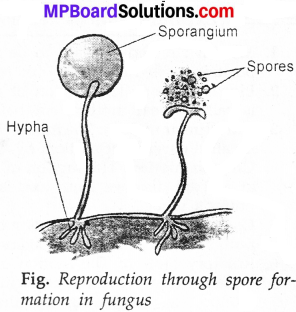
Question 6.
What are spores? When do they form?
Answer:
Several plants produce spores which germinate to produce new individual plants e.g., rhizopus, mucus and moss etc. It is the mechanism to overcome the unfavourable conditions.
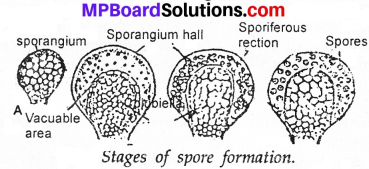
Question 7.
Draw a neat diagram to show reproduction through spore formation in fern?
Answer:
